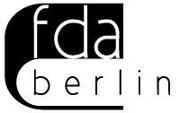Management Fashions: paradigms or research programmes? (short version)
Introduction
This paper examines the adoption of TQM (Total Quality Management) from a Kuhnian perspective. By looking at the history of science, Kuhn reveals that the development of science undergoes certain phases - Pre-Science, Normal Science and Revolutionary Science.
A paradigm shift means that science experiences a revolution (Godfrey-Smith, 2003). The focus of this assignment will be on Kuhn’s theory about paradigms and paradigm shifts, showing that the adoption or abandonment of TQM is irrational and cannot depend on any empirical evidence regarding the effectiveness and efficiency of TQM.
Kuhn’s view as well as the history and concept of TQM are examined first. In the following, TQM will be described as a Kuhnian paradigm and empirical evidence against as well as in favour of the effectiveness and efficiency of TQM will be provided. Moreover, it will be shown that empirical evidence actually does not play a role in the popularity of TQM as a management fashion as explained by the theory-ladenness of observation and incommensurability of paradigms.
The concept of TQM
Total Quality Management (TQM) can be defined as a strategic process that primarily focuses on managing the organization as a whole to provide its customers with services and products that satisfy their needs, through management leadership, mobilization of individuals and by combining all the resources of the firm. Wilkinson, Redman, Snape, and Marchington (1998) claim TQM as the most advanced approach in the field of quality control.
According to Reed, Lemark, and Montgomery (1996), the components of TQM includes developing a market advantage, improve process design efficiency, sustaining process efficiency and to boost product reliability and they also inferred that a balance among the firm’s orientation, the environment of the firm and the components of TQM is required to improve long-term firm performance (Love, Li, Irani, & Holt, 2000).
Kuhn’s view
Kuhn sees progress in science as a ‘paradigm shift’ (Godfrey-Smith, 2003). In Kuhn’s view of science, revolution occurs when one paradigm is replaced by another.
A paradigm can be defined in a broad as well as a narrow sense according to Godfrey-Smith (2003). In the broad sense, a paradigm is a way of doing science; it holds claims about the world, methods for how to gather and analyse scientific data as well as habits of scientific thought and action. Kuhn argues that one important part of a paradigm is a specific achievement or exemplar. This describes the narrow sense of a paradigm.
Kuhn’s central claim
Kuhn distinguishes between normal science and revolutionary science. Normal science describes scientific work that is guided by one paradigm; fundamental ideas and principles are not debated (Godfrey-Smith, 2003). Change within normal science, hence within one paradigm, is a clear progress as there are agreed-upon standards for the justification of arguments. In revolutionary science, on the other hand, progress is not clear and fundamentals are challenged. A scientific revolution, according to Kuhn, brings about a switch in paradigms, which can only occur if a critical amount of anomalies within the currently adopted paradigm arose and a rival paradigm appeared (Godfrey-Smith, 2003).
Kuhn’s central claim is that this process of switching from one paradigm to another is irrational. According to him, this is due to the fact that when you choose whether to adopt the new paradigm, you cannot compare the two paradigms to find out which one is ‘better’ as they are incommensurable, thus you cannot objectively choose a paradigm (Godfrey-Smith, 2003).
Theory-ladenness of observation
Theory-ladenness of observation claims that it is not possible to see observation as a neutral source of information. What scientists see is influenced by the paradigm they adopted thus it is influenced by what scientists believe.
Incommensurability
According two Kuhn, two competing paradigms are incommensurable, thus they are not comparable in the sense to find out, in an objective way, which one is ‘better’. The main reason for this is the fact that “people in different paradigms will use different standards of evidence and argument” (Godfrey-Smith, 2003, p. 92). Those people would not agree what a successful and good theory is supposed to do (Godfrey-Smith, 2003).
TQM as a paradigm
TQM is a way of achieving and guaranteeing quality within a company. Furthermore, TQM makes certain claims about the management world, for example that quality depends, amongst others, on customer and employee involvement and committed leadership (Powell, 1995) and that mistakes can be avoided (Hashmi, 2010). These claims also guide the process of gathering and analysing scientific data: data on employee involvement could be gathered in order to determine the degree that employees do actually feel involved, or scientific data about the defect rate in processes would be analysed in a way of preventing defects. As the focus of the company is on quality enhancement, scientific data would be gathered to determine and improve the overall quality of products and processes. When productivity was the main focus in the past (Petersen, 1999), scientific data on the speed of processes would, for example, have been more important and a habit of scientific thought would have been to improve results. Scientific data in the TQM paradigm, however, does not only focus on the quality improvement of products and technical processes, but also on the improvement of capabilities and people, and therefore improving capabilities to improve results instead of just trying to improve results (Hashmi, 2010).
Managers that adopt TQM will develop a habit of scientific thought and action. Scientific theories, for example, would be assessed according to how well they incorporate the idea of quality improvement. Managers that adopt TQM will believe that quality in a company needs to be controlled and managed (Powell, 1995), and that it is possible to avoid mistakes and prevent defects (Hashmi, 2010). Thus, TQM provides a certain view of the ‘world’, or in this case the management world.
Kuhn also argues that within normal science, concepts provided by the paradigm are applied to issues that the paradigm suggests should be possible to solve (Godfrey-Smith, 2003). TQM suggests that issues such as an increased demand by consumers to improve quality of service (Hashmi, 2010) should be possible to solve by applying the concepts provided by TQM, such as improving capabilities to improve results and prevent defects. Additionally, within normal science, scientists extend the adopted paradigm (Godfrey-Smith, 2003). TQM, for instance, produced practices such as just-in-time production and quality circles (Powell, 1995). Moreover, change within normal science can occur, but it is orderly (Godfrey-Smith, 2003). The TQM paradigm changed from only being applicable to manufacturing functions to also nonmanufacturing functions, such as product development (Powell, 1995). This change, or expansion, of the application area was not chaotic but orderly.
Kuhn used the world ‘normal science’ to describe “scientific work that occurs within the framework provided by a paradigm” (Godfrey-Smith, 2003, p. 77). Within normal science, scientists agree on which problems are important. In the case of TQM, managers that adopted TQM will agree that problems regarding quality will be important.
As described before, a paradigm can also be viewed in a narrow sense, meaning an important achievement or successful experiment which inspires others and suggests how to investigate the world (Godfrey-Smith, 2003). In the U.S., TQM did not become a management fashion until Deming’s approach towards quality improvement was successfully applied at the American company Ford in the (Petersen, 1999). This striking achievement led managers wanting to improve their operations and consultants rushed into learning about TQM for their clients (Petersen, 1999). Therefore, the application of TQM at Ford serves as one exemplar for the TQM paradigm in the U.S.
Although Kuhn’s theory follows the principle of ‘one paradigm per field per time’ (Godfrey-Smith, 2003), Kuhn does allow exceptions. Therefore, one cannot argue that Kuhn’s theory of paradigms is not applicable by saying that, contradicting to the ‘one paradigm per field per time’, it would be possible to have different paradigms in the scientific field of quality improvement. Kuhn’s main claim is that the change from one paradigm to another is irrational. This claim still holds if there are more paradigms in one field per time.
As the characteristics of Kuhn’s terms ‘paradigm’ and ‘normal science’ are applicable to the concept of TQM, we argue that TQM is a paradigm.
References
Abrahamson, E. (1996). Management fashion. The Academy of Management Review, Vol. 21(1), 254-285.
Adam Jr, E. E., Corbett, L. M., Flores, B. E., Harrison, N. J., Lee, T. S., Rho, B. H., Ribera, J., Samson, D., & Westbrook, R. (1997). An ihnternational study of quality improvement approach and firm performance. International Journal of Operations and Production Mannagement, 17, 842-873.
Beer, M. (2003). Why total quality management programs do not persist: The role of management quality and implications for leading a TQM transformation. Decision Sciences, 34(4), 623-642.
Burdett, J. O. (1994). TQM and re-engineering: The battle for the organization of tomorrow. The TQM Magazine, 6(2), 7-13.
Boaden, R. J. (1997). What is total quality management and does it matter? Total Quality Management, 8(4), 153-157.
Eskildson, L. (1994). Improving the odds of TQM’s success. Quality Progress, 27(4), 61-63.
Godfrey-Smith, P. (2003). Theory and reality. An introduction to the philosophy of science. Chicago: University of Chicago Press.
Grayson, C. J., & O’Dell, C. (1988). American business: A two-minute warning. New York: Free Press.
Hammer, M. (1990). Reengineering work: Don’t automate, obliterate. Harvard Business Review, 67(4), 104-112.
Hansson, J., & Backlund, F. (2002). Managing commitment: increasing the odds for successful implementation of TQM, TPM or RCM. International Journal of Quality & Reliability Management, 20(9), 993-1008.
Harari, O. (1997). Ten reasons why TQM doesn’t work. Management Review, 86(1), 38-44.
Hashmi, K. (2010). Introduction and implementation of total quality management (TQM). Retrieved from http://www.isixsigma.com/methodology/total-quality-management-tqm/introduction-and-implementation-total-quality-management-tqm/.
Hendricks, K. B., Singhal, V. R. (1999). Don’t count TQM out. Quality Progress, 32(4). 35-42.7
Hayes, R., & Abernathy, W. (1980). Managing our way to economic decline. Harvard Business Review, 67-77.
Jacobs, M. (1991). Short-term America. Cambridge, MA: Harvard Press.
Krajewski, L. J., Ritzman, L. P. (2001). Operations management: Strategy and Analysis. Upper Saddle River, NJ: Prentice-Hall.
Lahje, R: R., & Mohanty, R. P. (1994). Total quality management: concepts, evolution and acceptability in developing economies. International Journal of Quality & Reliability Management, 11(9), 9-33.
Love, P. E. D., Li, H., Irani, Z., & Holt, G. D. (2000). Re-thinking TQM: toward a framework for facilitating learning and change in construction organizations. The TQM Magazine, 12(1), 107-116.
Pascale, R. (1981). The art of Japanese management. New York: Simon & Schuster.
Powell, T. C. (1995). Total quality management as competitive advantage: A review and empirical study. Strategic Management Journal, 16(1), 15-37.
Petersen, P. B. (1999). Total quality management and the Deming approach to quality management. Journal of Management History, 5(8), 468-488.
Reed, R., Lemark, D. J., & Montgomery, J. C. (1996). Beyond process: TQM content and firm performance. Academy of Management Review, 21, 173-202.
Shin, D., Kalinowski, J. G., El-Enein, G. A. (1998). Critical implementation issues in total quality management. SAM Advanced Management Journal, 63(1), 10-14.
Wilkinson, A., Redman, T., Snape, E., & Marchington, M. (1998). Managing with total quality management. Theory and practice. Hong Kong: McMillian Business.
Willmott, H. (1994).Business process re-engineering and human resource management. Personnel Review, 23(3), 34-46.
.






 German
German
 English | Writeree.com
English | Writeree.com


